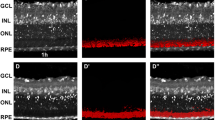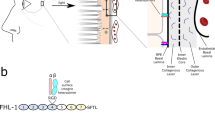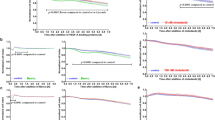Abstract
AVAILABLE experimental evidence indicates the primary role of retinal pigment epithelium (PE) in the uptake of retinol from the extravascular space of the choriocapillaris1 and possibly in its transfer to and from the photoreceptors2. While the transport mechanism of retinol in plasma by the retinol-binding protein (RBP) is known in detail3,4, only partial information is available on how circulating retinol is transferred from its carrier protein to PE. It has been shown5 recently that iodinated human RBP binds specifically to isolated bovine PE and autoradiographic investigations6 have suggested that the binding is confined to the choroidal surface of these cells. We have previously demonstrated7 that isolated human and bovine PE actively binds 3H-retinol only if this is present in the incubation medium as a complex with human RBP, and suggested that the interaction of circulating RBP with the cell membranes of PE is specific (G.M. and F.G., unpublished observations), and essential, for the active transport of retinol in these cells against a concentration gradient. We have now identified, in the plasma membranes of bovine PE incubated in the presence of 3H-retinol-RBP, a binding protein for retinol; some evidence is presented which suggests that this membrane protein is different from plasma RBP.
This is a preview of subscription content, access via your institution
Access options
Subscribe to this journal
Receive 51 print issues and online access
$199.00 per year
only $3.90 per issue
Buy this article
- Purchase on Springer Link
- Instant access to full article PDF
Prices may be subject to local taxes which are calculated during checkout
Similar content being viewed by others
References
Young, R. W., and Bock, D., Invest. Ophthal., 9, 524–536 (1970).
Dowling, J. E., Nature, 188, 114–118 (1960).
Kanai, M., Raz, A., and Goodman, De W. S., J. clin. Invest., 47, 2025–2044 (1968).
Peterson, P. A., and Berggard, I. J., J. biol. Chem., 246, 25–33 (1971).
Heller, J., J. biol. Chem., 250, 3613–3619 (1975).
Heller, J., and Bok, D., Am. J. Ophthal., 81, 93–97 (1976).
Maraini, G., and Gozzoli, F., Invest. Ophthal., 14, 785–787 (1975).
Vahlquist, A., Nilsson, S. F., and Peterson, P. A., Eur. J. Biochem., 20, 160–168 (1971).
Heller, J., and Horwitz, J., J. biol. Chem., 248, 6308–6316 (1973).
Heller, J., and Horwitz, J., Expl Eye Res., 18, 41–49 (1974).
Stahl, E., Thin-Layer Chromatography (Springer, Berlin 1969).
Weber, K., and Osborn, M., J. biol. Chem., 244, 4406–4412 (1969).
Wiggest, B. O., and Chader, G. J., Expl Eye Res., 21, 143–151 (1975).
Author information
Authors and Affiliations
Rights and permissions
About this article
Cite this article
MARAINI, G., OTTONELLO, S., GOZZOLI, F. et al. Identification of a membrane protein binding the retinol in retinal pigment epithelium. Nature 265, 68–69 (1977). https://doi.org/10.1038/265068a0
Received:
Accepted:
Issue Date:
DOI: https://doi.org/10.1038/265068a0
Comments
By submitting a comment you agree to abide by our Terms and Community Guidelines. If you find something abusive or that does not comply with our terms or guidelines please flag it as inappropriate.



